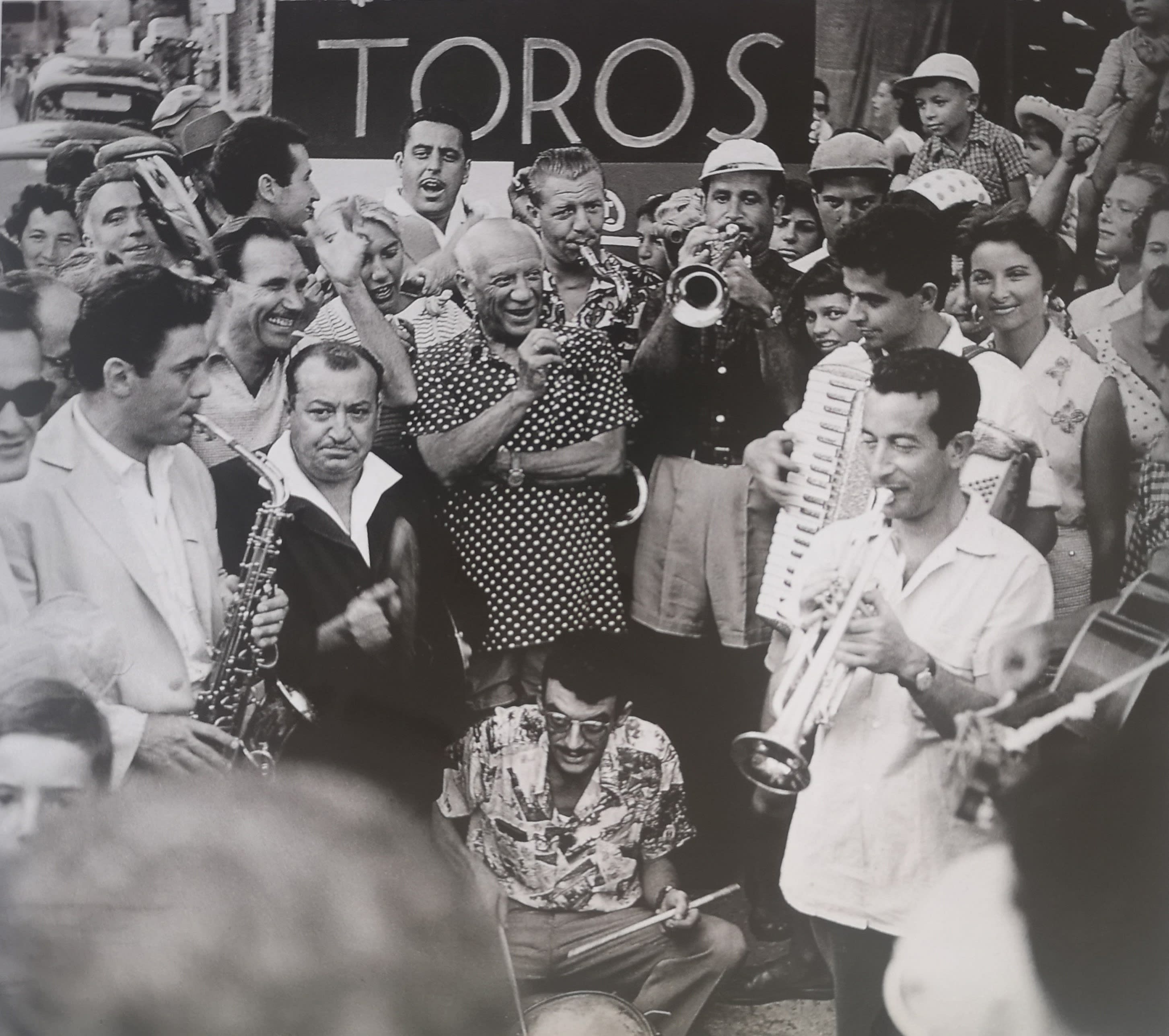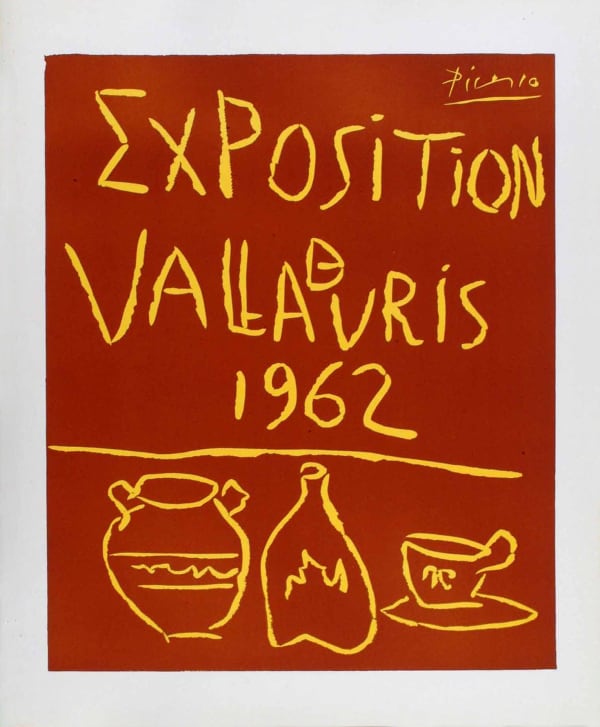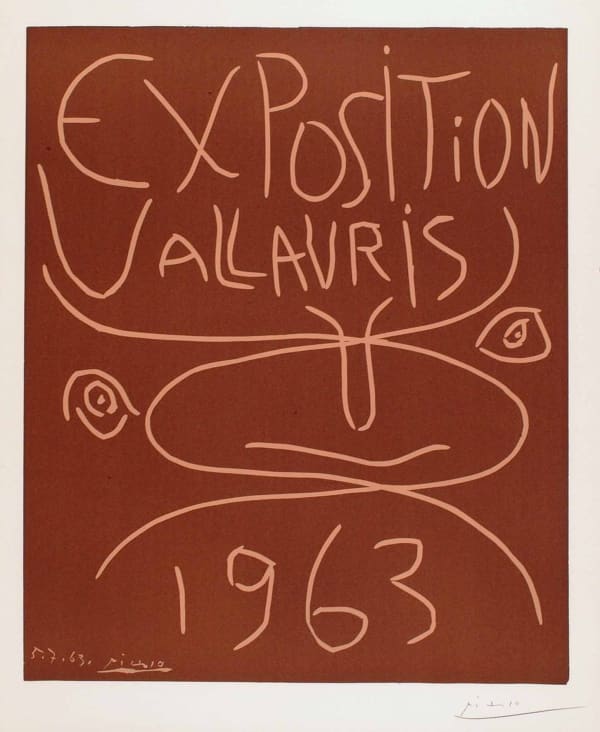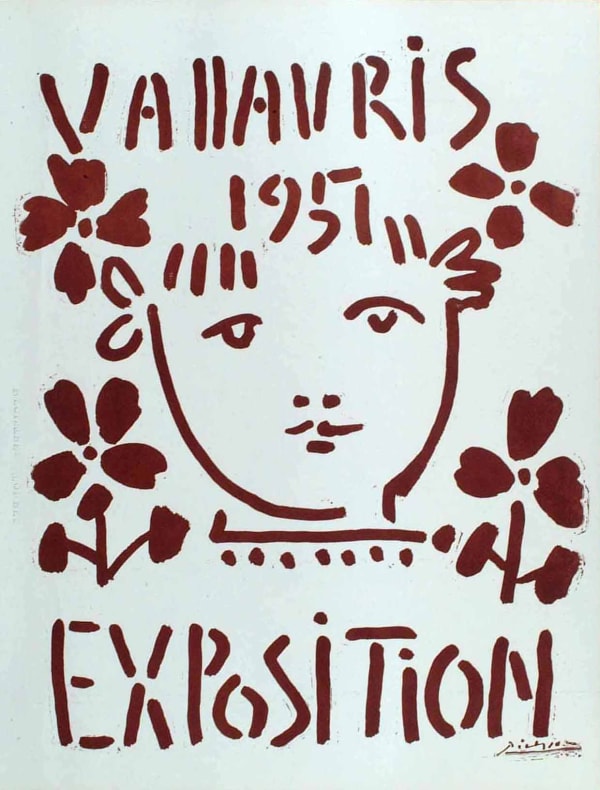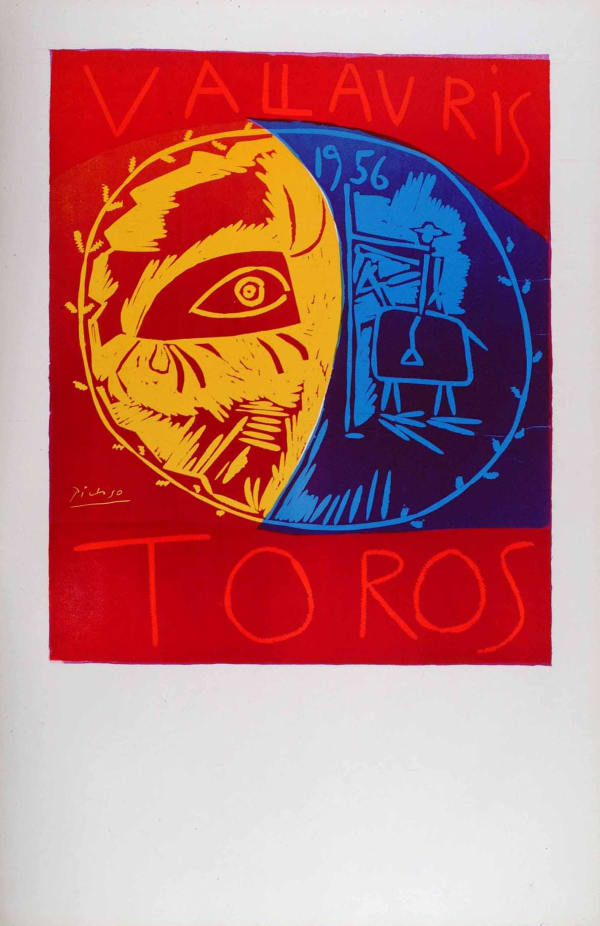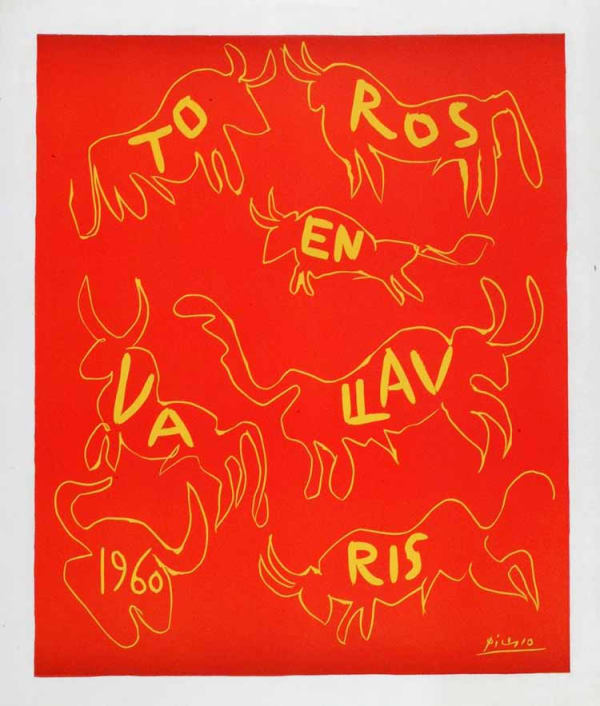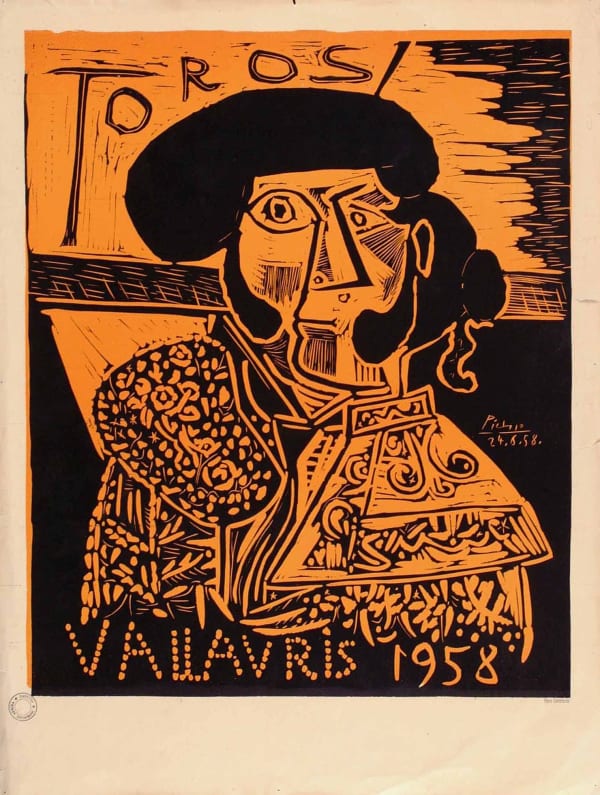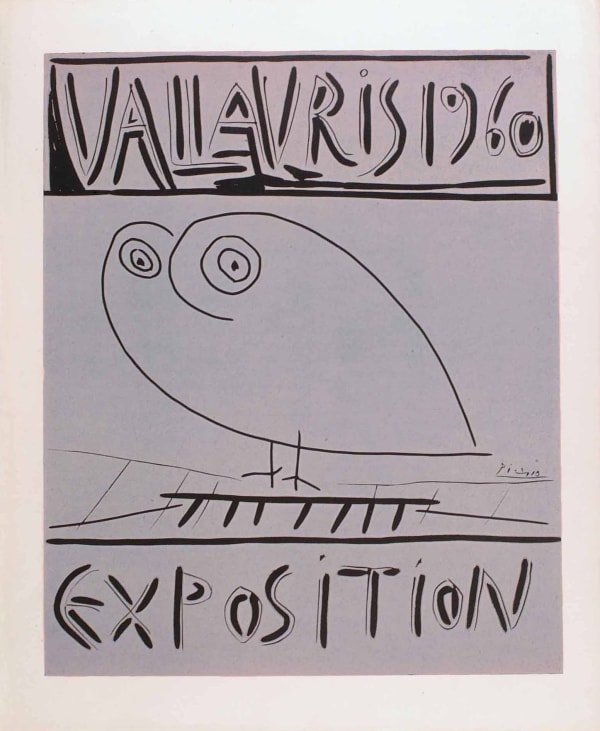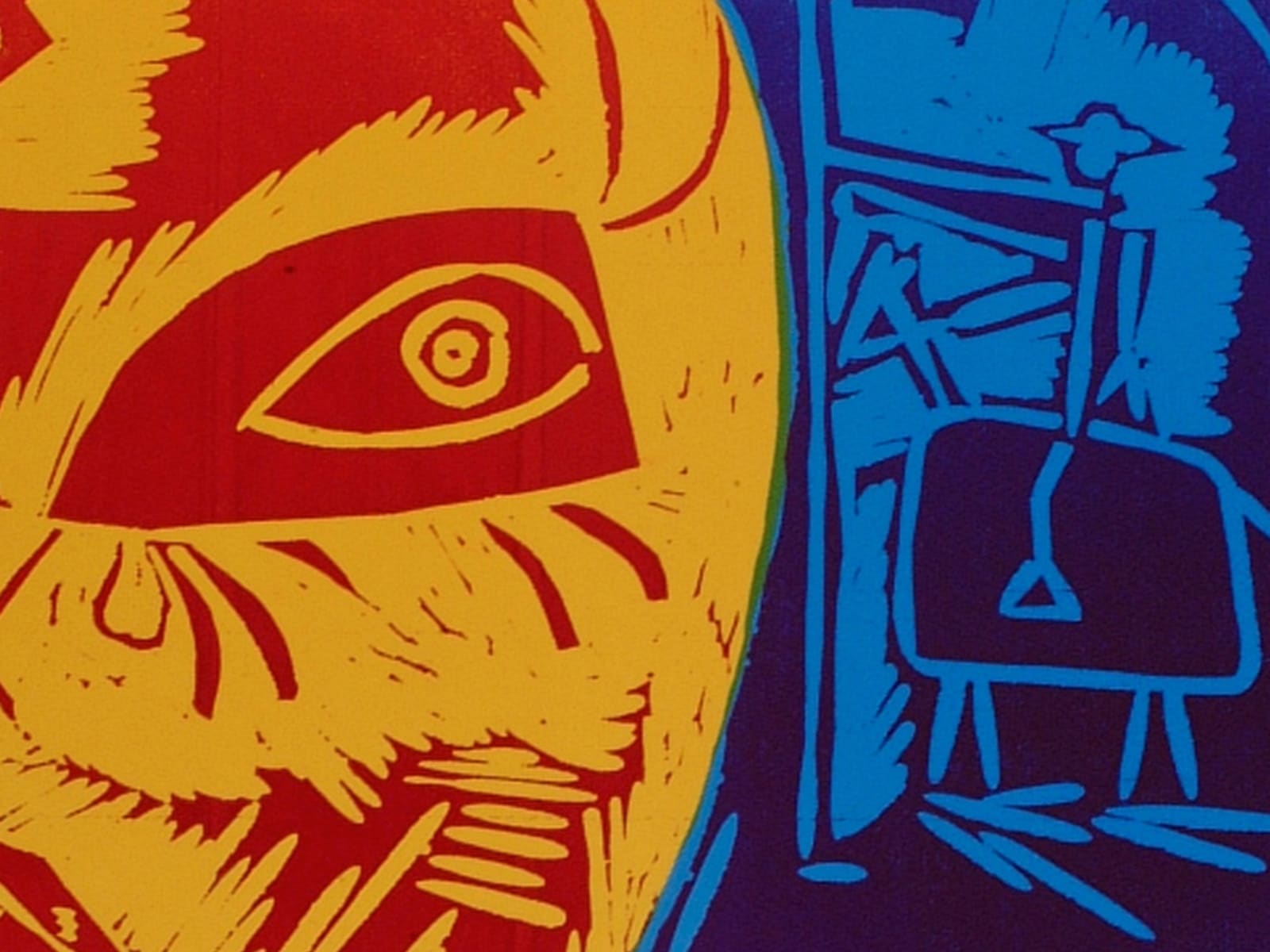Frederick Mulder Ltd is delighted to be presenting individual impressions of the Vallauris posters by Pablo Picasso as well as a complete collection of all Vallauris posters. The town of Vallauris, where Picasso lived, asked him to design the advertising posters of its annual ceramics exhibitions from 1951 to 1964, the "Exhibition posters", and of its corridas from 1954 to 1960, the "Toros posters"; all Exposition and Toros posters were printed by Hidalgo Arnéra, Picasso's young linocut printer, and our impressions come from his Archives so an impeccable provenance.
Only 197 subjects, among around 2,430 Picasso’s known prints are engravings from linoleum, also known as linocuts, and 24 are Vallauris posters, which are said to be one of the catalysts that spurred the artist on this new adventure. The thing that makes them remarkable among Picasso’s graphic production is their brightly coloured flat areas; they are also easy to read, for they are large, consist of simplified forms and have a limited range of colours. They are therefore particularly well suited to the appreciation of contemporary art and continue to be sought after by collectors.
-

-

-
The Vallauris posters have two characteristics that set them apart from posters of the time. Whereas composition and the typography would usually be clearly separated, with Picasso composition and typography are intertwined; they are of equal value, and one cannot exist without the other. For instance, in the 1955 poster below, he transforms a ceramic, probably a plate, into a laughing sun resembling a smiley emoticon; and he also creates small human figures from the letters l, a and r of Vallauris. The artist does not even use professional typography. He very carefully cuts them out in linoleum as if they had been handwritten, thus continuing to unify text and image. Yet, he does not neglect the commercial function of posters: not only does he draw the letters with thick lines but he also creates strong colour contrast between letter and image to make the poster legible from a distance. Linocuts printed in flat colour areas lend themselves well to contrast and Picasso had them printed in two or more bright colours, like in the Toros posters of 1956 below. He also played on their size: 76 x 91 cm on average, the posters are larger than usual and visible from afar. The lettering generally covers a third of the composition and serves as a heading or subtitle but can also become the body of the poster. Secondly, in addition to unifying image and text, the artist simplifies the design by reducing it to essentials. He merely indicates the place, Vallauris, the year and whether the poster is announcing a fair or a corrida, a successful formula he repeated year after year.
However, Picasso’s real skill lay in his aptitude to describe in each poster a personal attachment, an element of his daily life, simplified to such a degree that he created a universal message that everyone can understand – from the personal to the universal. Thus in 1951 the Exposition poster features a child, probably Claude or Paloma, and in the 1953 shown below he depicts a family. He thus does not make any direct reference to the ceramics, perfumes or flowers sold at the Vallauris fair, but represents his everyday life, which could be anyone’s life. The most obvious visual link between the fair and the posters is found in the 1956 design, which represents a joyous Madoura plate, a plate that became a human face in the Exposition poster and a scene from a corrida in the Toros poster as presented below. The posters for the 1957 and 1962 exhibitions with that of 1962 shown below are the only narrative ones; they depict potters, ovens, and ceramics.
What is evident in all of these posters is Picasso’s joie de vivre and his attachment to his work and to the Côte d’Azur. He is able to successfully convey his feelings when describing a familiar object or scene, but pared down to essentials in order to reflect the joyful and vibrant atmosphere of Vallauris and the South of France, his new discovery, his Arcadia, a universal Arcadia.
-

-
 André VillersJoie de vivre in Vallauris, 1955
André VillersJoie de vivre in Vallauris, 1955 -

-

-
The Vallauris Collection
A collection of 29 impressions covering all the 'Exposition' and 'Toros' posters



